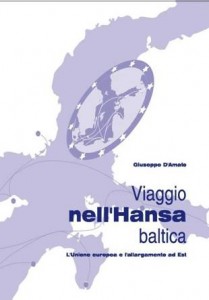New EU growth forecast. Polish GDP from 2.7% (May 2010) to 3.4%
13 Sep 2010The European Commission on Monday’s revised its growth forecast for EU economy in 2010. According to the new data, GDP for the 16-nation euro area this year should jump 1.7%, compared to its previous forecast of 0.9%, thanks to increases of 3.4% in Germany and Poland, 1.9% in the Netherlands, 1.7% in Britain, 1.6% in France, and 1.1% in Italy.
Poland – manufacturing sector leads the recovery
Economic activity continued to be strong in the second quarter of 2010, with GDP growth reaching 1.1% q-o-q. The upswing was driven by a strong manufacturing sector (industrial production (s.a.) grew by 10.5% y-o-y in the second quarter of 2010) and a sharp rebound in world trade that brought Polish exports to their pre-crisis levels. Moreover, domestic demand increased on the back of rebuilding inventories and accelerating private consumption, fuelled by improving confidence as the recovery becomes firmer, and the overall resilience of the labour market. However, private investment continued to suffer from uncertainties regarding the global recovery and low capacity utilisation levels. In 2010 real GDP growth is expected to accelerate to 3.4%, ¾ pp. higher than expected in the Commission’s spring forecast. This follows from the better-than-expected result in the first half of 2010.
Quarterly real GDP growth is projected to slow somewhat in the third quarter of 2010 and remain stable in the final quarter of the year. The recovery is likely to be mild in the second half of the year, as the impetus from stock-building is likely to peter out and employment growth will remain sluggish towards the end of 2010. Although part of the labour-market adjustment was achieved through real wages, labour hoarding during the slowdown will imply less employment-rich growth and some re-adjustment of wages in the years to come. Stagnating employment and real wages will weigh on real disposable income and, combined with necessary fiscal consolidation, limit the potential for a strong rebound of domestic consumption.
Investment growth will mainly reflect robust public spending in capital expenditure, while tight financing conditions and excess capacity in certain sectors will hamper growth in private investment. The annual HICP inflation rate reached 2.5% in the second quarter of 2010, a notch higher than in the spring forecast. It is expected to remain below the central bank’s inflation target of 2.5% within the forecast horizon, reflecting the remaining slack in the economy.
Document – EU
- In: Energy&Economy
Comment Form
Welcome
We are a group of long experienced European journalists and intellectuals interested in international politics and culture. We would like to exchange our opinion on new Europe and Russia.
Categories
- Breaking News (11)
- CIS (129)
- Climate (2)
- Energy&Economy (115)
- EU Eastern Dimension (85)
- Euro 2012 – Sochi 2014 – World Cup 2018, Sport (43)
- Euro-Integration (135)
- History Culture (198)
- International Policy (261)
- Military (74)
- Interviews (18)
- Italy – Italia – Suisse (47)
- Odd Enough (10)
- Poland and Baltic States (126)
- Religion (31)
- Russia (421)
- Survey (4)
- Turning points (4)
- Ukraine (176)
- Российские страницы (113)
Archives
- November 2020
- October 2020
- September 2020
- August 2020
- July 2020
- May 2020
- April 2020
- March 2020
- January 2020
- December 2019
- November 2019
- October 2019
- September 2019
- August 2019
- July 2019
- June 2019
- May 2019
- April 2019
- March 2019
- February 2019
- December 2018
- November 2018
- October 2018
- September 2018
- August 2018
- July 2018
- June 2018
- May 2018
- April 2018
- March 2018
- February 2018
- January 2018
- December 2017
- November 2017
- October 2017
- September 2017
- August 2017
- July 2017
- May 2017
- March 2017
- January 2017
- December 2016
- November 2016
- October 2016
- September 2016
- July 2016
- June 2016
- May 2016
- April 2016
- February 2016
- January 2016
- November 2015
- October 2015
- September 2015
- June 2015
- April 2015
- March 2015
- February 2015
- January 2015
- December 2014
- November 2014
- October 2014
- September 2014
- August 2014
- July 2014
- June 2014
- May 2014
- April 2014
- March 2014
- February 2014
- January 2014
- December 2013
- November 2013
- October 2013
- September 2013
- August 2013
- July 2013
- June 2013
- May 2013
- April 2013
- March 2013
- February 2013
- January 2013
- December 2012
- November 2012
- October 2012
- September 2012
- August 2012
- July 2012
- June 2012
- May 2012
- April 2012
- March 2012
- February 2012
- January 2012
- December 2011
- November 2011
- October 2011
- September 2011
- August 2011
- July 2011
- June 2011
- May 2011
- April 2011
- March 2011
- February 2011
- January 2011
- December 2010
- November 2010
- October 2010
- September 2010
- August 2010
- July 2010
- June 2010
- May 2010
- April 2010
- March 2010
- February 2010
- January 2010
- December 2009
- November 2009
- October 2009
- September 2009
- August 2009
Our books




